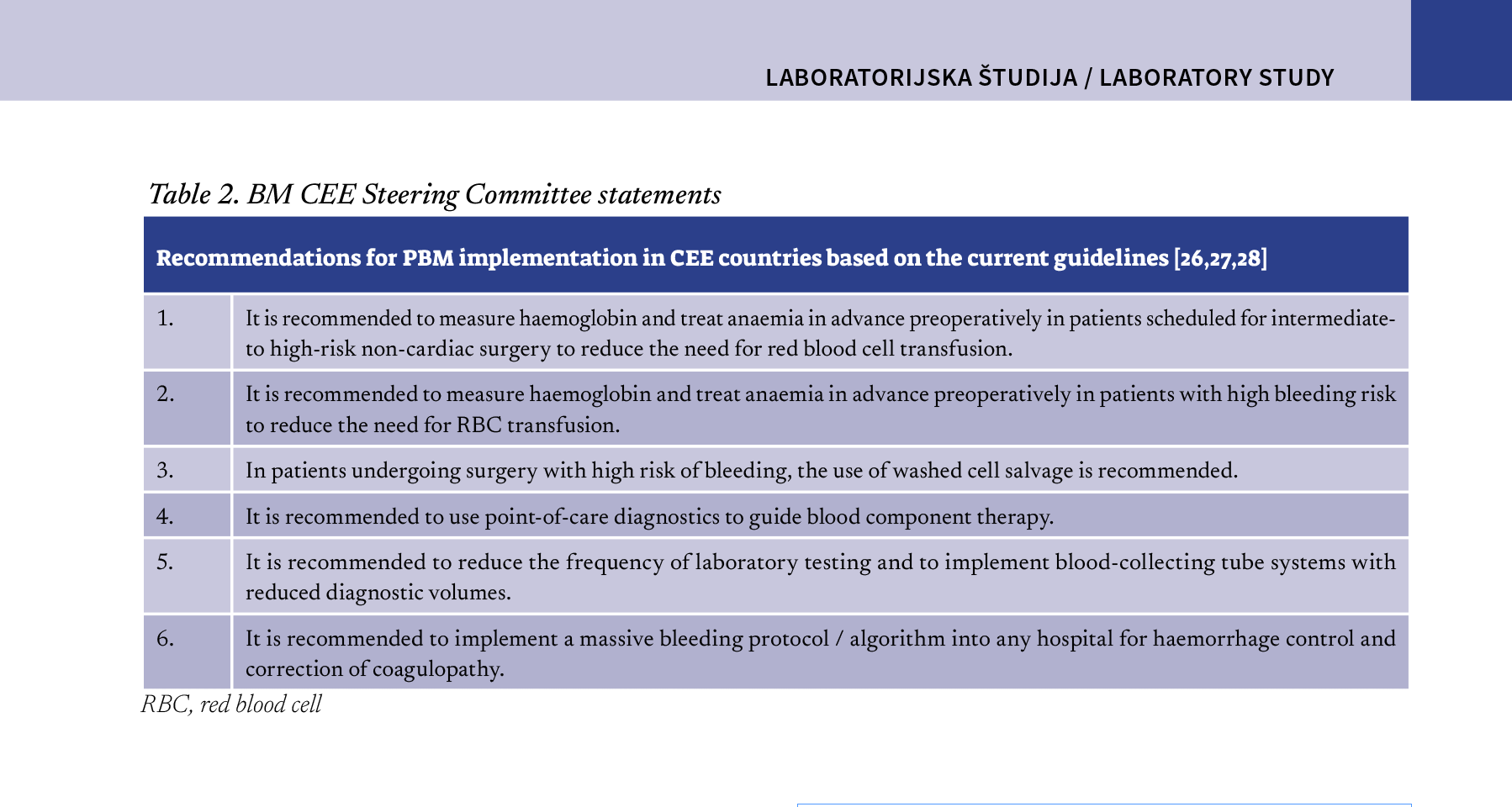Patient Blood Management: Where Are We Now and What Should We Do?
Skrb za bolnikovo kri: kje smo in kako naprej
DOI:
https://doi.org/10.18690/actabiomed.278Keywords:
preoperative anaemia, transfusion, blood loss, optimization of coagulation, iron deficiencyAbstract
Patient blood management (PBM) is an interdisciplinary, patient-centred approach based on three pillars: 1) comprehensive anaemia management; 2) minimization of blood loss and optimization of coagulation perioperatively; and 3) leverage and optimization of patient-specific physiological tolerance of anaemia. The effectiveness and safety of PBM, together with the fact that >30% of the world population is anaemic with detrimental health and economic consequences, led the World Health Organisation to issue a policy brief in 2021 on the urgent need to implement PBM. Implementation of the PBM programme, differs among European countries. On the basis of the current guidelines, the Central Eastern European Patient Blood Management Steering Committee reached a consensus in 2024 to ensure minimal hospital standards of PBM implementation in Central and Eastern European countries. This article describes the PBM programme, its current status, and the possibilities for its perioperative implementation, according to the three pillars of PBM, at the University Medical Centre Maribor, as the second largest hospital in the Republic of Slovenia, from the point of view of an anaesthesiologist and a clinical pharmacologist. Its purpose is to inform readers about the importance of PBM implementation and raise awareness of the need for urgent action by healthcare providers and authorities to ensure optimal patient care.
Downloads

Downloads
Published
Issue
Section
License
Copyright (c) 2024 Miodrag Žunić (Author)

This work is licensed under a Creative Commons Attribution 4.0 International License.